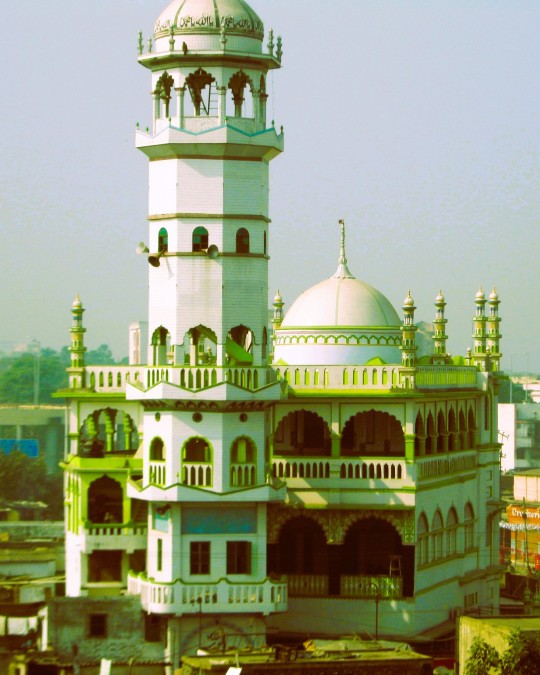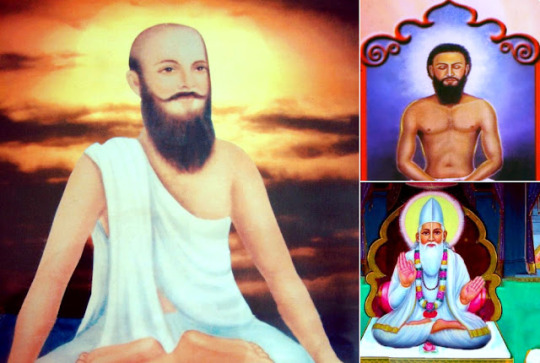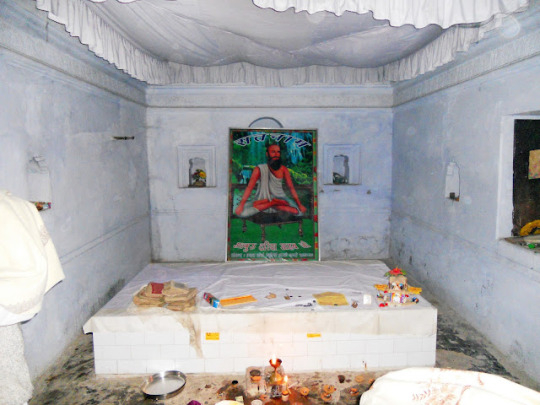#Bihar India
Explore tagged Tumblr posts
Text

Rajapur, Patna, Bihar.
29 notes
·
View notes
Text

Ruins of the Naurattan, Sasaram, Bihar
Artist: Thomas Daniell (English, 1749–1840)
Date: 1811
Medium: Oil on canvas
Collection: Yale Center for British Art, New Haven CT, United States
#painting#landscape#ruins of the naurattan#bihar#sasaram#india#palace#peasants#fine art#oil on canvas#ruins#sheep#tree#thomas daniell#english landscape painter#yale center for british art#19th century painting#european art#artwork#19th century art
22 notes
·
View notes
Text

Durga Puja festival in Bihar, India
Rena Effendi
84 notes
·
View notes
Text

Raghubir Singh – Monsoon Rains, Monghyr, Bihar, 1967
151 notes
·
View notes
Text

Jama Masjid Mosque, Patna, Bihar, India: Patna historically known as Pataliputra, is the capital and largest city of the state of Bihar in India. Patna also serves as the seat of Patna High Court. The Buddhist, Hindu, and Jain pilgrimage centers of Vaishali, Rajgir, Nalanda, Bodh Gaya, and Pawapuri are nearby and Patna City is a sacred city for Sikhs as the tenth Sikh Guru, Guru Gobind Singh was born here. The modern city of Patna is mainly on the southern bank of the river Ganges. Wikipedia
101 notes
·
View notes
Text
NITISH KUMAR PLEASE MAN IM BEGGING YOU I'LL DO ANYTHING
8 notes
·
View notes
Text
At present, the Bihar government's caste survey is the only available one that demonstrates the share of each individual caste - across religion and different constitutional categories - in their access to education, housing, income, mobility and technology. Bihar, in total, has 215 castes across SCs (19 percent of the population), STs (1.6 percent), Backward Classes (27 percent), Extremely Backward Classes (36 percent) and upper castes (15 percent). The Bihar government defines a poor family household as one whose monthly income is less than six thousand rupees. Fewer than three percent of Brahmin families meet this criterion, while the figure is over forty percent for SCs and STs, indicating the upper-caste monopoly over economic resources… Among the upper castes, over 50 percent have pucca houses, while 5.89 percent have huts and 0.31 percent were homeless. Among Dalits, only 24 percent have pucca houses, while 23 percent live in huts. After Adivasis, Dalits also have the largest homeless population.
Sagar, ‘Foundational Flaws’, Caravan
2 notes
·
View notes
Text
Asif Ahmad: A Young Entrepreneur from Bihar
Bihar, the state I proudly call home, has long faced significant challenges in key areas such as healthcare, education, and infrastructure. Growing up in Bihar, I personally witnessed the struggles of talented individuals forced to leave their home state in search of better opportunities. This experience became the driving force behind my mission to transform Bihar into a thriving hub where every individual—no matter their background—can achieve their full potential without having to migrate for a better life. Over the years, I have focused on addressing some of Bihar’s most pressing issues: limited access to quality education, a shortage of healthcare services, and the need for sustainable infrastructure.
Education: A Cornerstone for Empowerment
Education has always been at the heart of my vision for Bihar. As a young person here, I saw the immense potential in our youth but recognized the stark gap in access to quality education. Many young people had to leave Bihar to pursue their academic goals, and this migration was a barrier to both personal growth and regional development. After returning to India from my studies abroad, I focused on strengthening local institutions like Madhubani Medical College and the Madhubani Institute of Nursing & Paramedical Sciences. These institutions provide world-class education in Bihar, offering opportunities for local youth to thrive in their home state. By training students locally, particularly in healthcare, we aim to ensure that Bihar retains its brightest minds and creates a sustainable environment for them to contribute meaningfully to the state’s growth.
Healthcare: Making Healthcare Accessible and Affordable
Access to quality healthcare has been another critical issue I’ve worked to address. Growing up in rural Bihar, I saw firsthand how families struggled to access basic medical services. The nearest healthcare facilities were often far away, and the cost of treatment was prohibitive for many. The shortage of trained medical professionals was also a major barrier to care. In 2019, I became deeply involved with Madhubani Medical College, which offers an MBBS program and is attached to a 600-bed hospital providing affordable treatment. With consultation fees as low as Rs 30 and room charges just Rs 150 per day, the hospital aims to make quality healthcare accessible to everyone. But this initiative is about more than just addressing immediate needs; it’s about building a self-sustaining healthcare infrastructure that can serve future generations of Biharis.
Infrastructure: Building the Foundation for Growth
For Bihar to truly prosper, modernization of its infrastructure is essential. This includes building reliable roads, improving transportation networks, and upgrading utilities. As part of Astaus India Pvt Ltd, the company I co-founded, we are working on various infrastructure projects aimed at improving connectivity, boosting the local economy, and enhancing the quality of life for Bihar’s residents. From eco-friendly construction to sustainable urban planning, we are committed to creating modern infrastructure that supports long-term economic growth and ensures Bihar can compete with more developed regions.
Creating an Ecosystem of Opportunity
Beyond education, healthcare, and infrastructure, my broader vision for Bihar is to foster an environment of opportunity, particularly for its youth. By focusing on entrepreneurship, job creation, and economic empowerment, I want Bihar to become a state where young people don’t feel the need to leave for better opportunities. Supporting local entrepreneurs and small businesses is key to creating a thriving, self-sustaining economy. This will encourage innovation, generate employment, and help the state build an ecosystem that empowers its citizens.
A Broader Mission: Empowering India
While Bihar will always be at the center of my efforts, I also recognize that the challenges of education and healthcare are not unique to this state. That’s why I am also working on initiatives outside Bihar, such as the establishment of Kashmir Medical College, the first private medical college in the region. By addressing disparities in education and healthcare across India, my broader mission is to create an equitable system that benefits all citizens, regardless of where they live.
Looking Ahead: A Brighter Future for Bihar
Looking to the future, I envision a Bihar that thrives—a state where every individual has the opportunity to succeed, where youth can find fulfilling careers at home, and where accessible healthcare and modern infrastructure support the overall well-being of the population. I believe that with the right investments in sustainable development, a focus on innovation, and collaboration across all sectors, Bihar can become a leader in economic and social progress in India. The journey will take time, but with each step, we are laying the foundation for a more prosperous and equitable future. Bihar’s transformation is not just a dream; it is a vision I am committed to making a reality, one initiative at a time.
2 notes
·
View notes
Text
karma is real like-what we think of Bihar as Indians that's exactly what foreigners think of India.
#being desi#desi academia#desi moodboard#desi shit posting#desi things#desi memes#desi humor#karma#bihar#india#foreigners#think#pov#real
8 notes
·
View notes
Text
Land Survey of Bihar is the Need of the Hour
The first land survey of Bihar was conducted in 1950 after the abolition of the Zamindari system, when the Supreme Court of India finally approved it along with the Bihar Land Reform Act passed in the Bihar Assembly. Since then, it took 74 years to do the second time in 38 districts of Bihar, which consisted of around 45,000 villages. Despite Bihar's status as India's agricultural state, home to 13 crore people, the Bihar government has shown no concern for this issue.
Now, the question arises in such a dismal consideration of the state government: why is the land survey of Bihar being conducted? What is the purpose of the state government for conducting land surveys? There seems to be nothing clear on this aspect rather than only one strong reason that the world has become digital and the land of Bihar is sitting idle in the name of ancestors, which has no relevance to the young generation....know more
#Land survey#Land survey of Bihar#Agriculture Land survey in Bihar India#Land survey of Bihar halted#Corruption in Land survey of Bihar#Problems faces by the people of Bihar
2 notes
·
View notes
Text

George Orwell's birthplace in Motihari, Bihar, India
3 notes
·
View notes
Text
#सत भक्ति सन्देश
कुरीतियों का अंत
संत रामपाल जी महाराज अपने तत्वज्ञान व पवित्र शास्त्रों से प्रमाण देकर दहेज प्रथा, तेरहवीं, छमाही, बरसी, पितृ पूजा, श्राद्ध कर्म आदि कुरीतियाँ जो समाज पर बोझ बनी हुई हैं, उन्हें समाप्त कर रहे हैं।
📚अवश्य पढ़ें आध्यात्मिक पुस्तक "जीने की राह"।
#Saint Rampal Ji Maharaj

#santrampalji is trueguru#kabir is real god#sant rampalji maharaj app#india#delhi#mumbai#indore#bihar#america#canada
9 notes
·
View notes
Text
Day 1
"Unveiling the Mystique of Madhubani: Dive into a 10-day journey exploring the vibrant world of this ancient Indian art form."
"Welcome to our Madhubani painting series! Over the next 10 days, discover the history, techniques, and beauty of this traditional art from Bihar, India. Let's embark on this colorful adventure together!"
"Madhubani art — also known as Mithila art — is a traditional Indian art form noted for its use of local plants for colors, cow dung to treat the paper and bamboo sticks that serve as brushes, not to mention the beauty and simplicity of the paintings themselves.
Are Madhubani and Mithila the same?
Yes, these are two names for the same art form — Madhubani painting is also known as Mithila because it originated from the Mithila region in Bihar, India.
When did Madhubani art originate?
While its exact origin is unknown, legend holds that King Janak, the ruler of the Mithila region in the 8th or 7th century BCE, requested this new form of painting to capture his daughter Sita’s wedding to Prince Rama, the central figure of the epic Ramayana."
#madhubani #madhubanipainting #madhubaniart #indianart #indianartist #artistsoninstagram #artist
#introverted kour#aesthetic#traditional art#ancient art#madhubani#madhubani painting#madhubani art#mithila art#bihar#india#art tutorial#art therapy
3 notes
·
View notes
Text
Sant Tulsi Sahib’s Spiritual Master Was Sant Dariya Sahib of Bihar, by James Bean

As has been mentioned by scholars contributing to that great book, The Sants, Studies in a Devotional Tradition of India, published in 1987 by Motilal Banarsidass, Radhasoami Reality by Mark Juergensmeyer, and, Tulsi Sahib - Saint of Hathras, Tulsi Sahib's teachings and those of Radhasoami are most compatible with the earlier Dharamdasis (the Sant Dharam Das line of Satgurus), a branch of the Kabir Panth, a guru lineage that also used the Five Names and held the Anurag Sagar to be a central sacred text.
Both Dariya Sahib and Tulsi Sahib had a beef with the Dharamdasis over spiritual practice, believing that they and the other earlier Sant Panths and Sikhs had gone off course no longer fully imparting the complete teachings of Kabir, Dharam Das and the other Sants. With the old format initiation was divided into two initiations: the first into the names, contemplation upon the form of the satguru, and inner Light. After satsangis reported being established in the Light, they then could move on to the second initiation into the Sound Current. I've confirmed this myself from my discussions with people in the Dharam Das Kabir group and other Panthis. Most people in those Panths never get to the second initiation into Surat Shabd Yoga. This was crossing a red line for Dariya Sahib's guru, Darya, and Tulsi Sahib. Too many chauka (chowka) coconut rituals, not enough Shabd Yoga. See page 85 of the book, Param Sant Tulsi Sahib, the chapter titled, Sant Mat and its Secrets, Dialogue Between Tulsi Sahib and Phool Das of the Kabir Sect.
The Dariya Sahib sangat was a schism branching off of the Dharamdais. Dariya Sahib is even portrayed by his followers as another reincarnation of Kabir come to reboot Sant Mat during this part of Kali Yuga. This rift with the Dharamdasis shouldn't be overlooked, as it's an important part of the history just prior to the time of Tulsi Sahib.
“How long will this line of succession continue? Kindly relate it to us in your own words, asks Fakkar Das. ‘Listen mindfully, 0 Fakkar Das, I explain this to you, says Dariya:
"As long as the discipline of the Sound Current
is preserved unadulterated,
The line of succession will truly continue.
But when it is mixed with outer rituals
and display of external garbs,
My Sound Current will part company.
My Divine essence will depart,
And the souls will go into the mouth of Kal.
I shall then come to this world,
And shall proclaim the teaching
of the Sound Current again.
Proclaiming the teaching,
I shall found the line of succession [again].
And emancipating the souls,
I shall take them to my Abode….
For aeons I have been coming,
And imparting the teaching
of the true Sound Current."
And:
"That ladder is continued through me, says Dariya. Fakkar Das, Basti Das, and Guna Das are the ladders proceeding from me. Whomsoever they appoint as their successors would also be known as ladders. Thus will my line of succession continue." (Dariya Sahib - Saint of Bihar, by Dr. Kashi Nath Upadhyaya)
The True Identity of Sant Tulsi Sahib's Guru, Ratnagar Rao Revealed
If in the 1930's someone saying that Sant Mat was their spiritual path wrote that Hazur Baba Sawan Singh was one of the greatest masters of all time, on the same level as Kabir, Nanak, Dadu Dayal, Ravidas, Surdas, etc... you just know that person was extremely likely to have been a Radhasoami! Given that Dariya Sahib and Tulsi Sahib were contemporaries, the same observation can be made, the same logic can be applied to Tulsi Sahib's intriguing references to Dariya Sahib of Bihar, mentioning him in his various writings and incorporating some of the bhajans of Dariya Sahib into his writings. It's very plausible, very likely even that Tulsi Sahib was initiated by Dariya Sahib at a younger age, or that Tulsi Sahib was initiated later in life by one of the above-mentioned spiritual successors of Sant Dariya Sahib. No Cirque du Soleil mental gymnastics attempt at massaging the history or tea leaf reading is required. It's a rather straightforward observation based solely upon Tulsi Sahib's own words. Glad I'm not the only one to notice this:
"Among the saints whom Tulsi Sahib himself singles out in Ghat Ramayan as Satgurus (true masters) are Bu-Ali Qalandar, Jalaluddin Rumi, Kabir Sahib, Dadu Dayal, Rai Das Ji, Dariya Sahib (who may have been Tulsi Sahib's own Guru), Guru Nanak, Surdas Ji, Nabha Das Ji, Mansur, Mirabai, Sarmad and Shams-e Tabrizi." (Tulsi Sahib - Saint of Hathras, new expanded 2017 edition, Puri, Sethi, along with a new editor by the name of Dr. T.R. Shangari, page xiii)
Even after centuries, evidence for the existence of past Sants and the sangats, panths or organizations associated with a past Sant remain: the samadh where a Sant was buried, sacred sites where some saint spent much time in meditation, and the ashram of the Sant. These are maintained by satsangs, panths, usually somebody, even in the poorest and smallest of satsangs in rural India. Another reason why Sants are not typically unknown missing link mystery gurus is that people claim succession from them! and lineages live on. As with the Kabir Panth, as with Radhasoami with all those guru lineage charts, the same multiple guru lineage situation applies to the sangat of Sant Dariya Sahib of Bihar. So his meditation spot, his nineteen books, his samadh (tomb) and various ashrams are preserved, are still with us now.
Videos and Websites of the Sant Dariya Sahib Satsang:
https://youtu.be/CA5BmcqDtw4?t=169
https://youtu.be/qWNN5OJkkrk?si=PnoJ-KbcdHx15ssS
https://youtu.be/_g_gkM6_XkQ?t=410
https://theholysound.com/sant-dariya-saheb-bihar/books.html

#ratnagar rao#tulsi sahib#dariya sahib of bihar#satsang#sangar#radhasoami#sant mat#santmat#india#history#ghat ramayan#dariya sagar#anurag sagar
5 notes
·
View notes
Text
Population: 1,684,222
Note that Patna was known historically as Pataliputra.
The submitter commented, “The Buddha was enlightened near here.”
4 notes
·
View notes
Text

Fine in Fresh ✨
2 notes
·
View notes